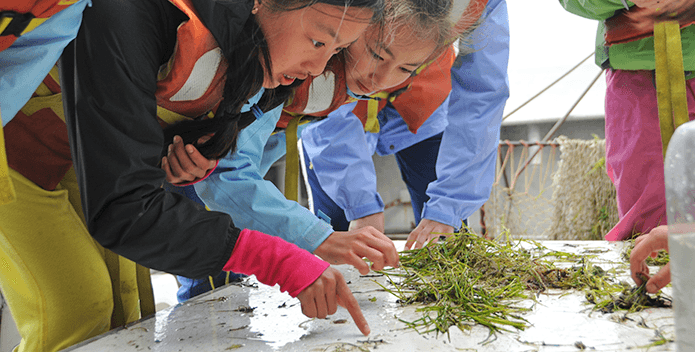MWEEs are made up of multiple components that include learning both outdoors and in the classroom and are designed to increase environmental literacy by actively engaging students in building knowledge and meaning through hands-on experiences.
MWEE Essential Elements and Supporting Practices
MWEE Essential Elements
MWEEs consists of four essential elements that describe “what students do.” These elements, together with the supporting practices, create a learner-centered framework that emphasizes the role of the student in actively constructing meaning from the learning experiences. The essential elements are not meant to be linear.
- Issue Definition
- Outdoor Field Experiences
- Synthesis and Conclusions
- Environmental Action Projects
MWEE Supporting Practices
The MWEE also includes four supporting practices that describe “what teachers do,” along with their partners, to ensure successful implementation with students.
- Teacher Facilitation
- Learning Integration
- Sustained Experiences
- Local Context
For more information on the Essential Elements and Supporting Practices, visit the Chesapeake Bay Program's online resource site, Baybackpack.com or download the Educator's Guide to the Meaningful Watershed Educational Experiences.
CBF works with teachers to support many aspects of MWEE design and implementation. Our highly trained, field-based educators provide dynamic, hands-on outdoor field experiences through Student Field Programs. Our Student Leadership Program supports student leaders in a variety of environmental action projects including watershed restoration and protection, civic engagement, and awareness campaigns. CBF also provides Professional Learning for hundreds of teachers and school leaders where they design and integrate MWEEs into their own curriculum using the Environmental Literacy Model.



